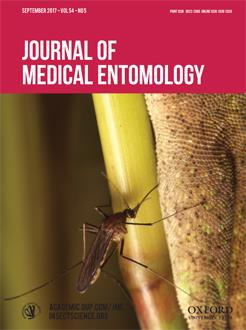We propose an improved Aedes aegypti (L.) abundance model that takes into account the effect of relative humidity (RH) on adult survival, as well as rainfall-triggered egg hatching. The model uses temperaturedependent development rates described in the literature as well as documented estimates for mosquito survival in environments with high RH, and for egg desiccation. We show that combining the two additional components leads to better agreement with surveillance trap data and with dengue incidence reports in various municipalities of Puerto Rico than incorporating either alone or neither. Capitalizing on the positive association between disease incidence and vector abundance, this improved model is therefore useful to estimate incidence of Ae. aegypti-borne diseases in locations where the vector is abundant year-round.
How to translate text using browser tools
10 April 2017
Aedes aegypti (Diptera: Culicidae) Abundance Model Improved With Relative Humidity and Precipitation-Driven Egg Hatching
Joceline Lega,
Heidi E. Brown,
Roberto Barrera
ACCESS THE FULL ARTICLE
It is not available for individual sale.
This article is only available to subscribers.
It is not available for individual sale.
It is not available for individual sale.

Journal of Medical Entomology
Vol. 54 • No. 5
September 2017
Vol. 54 • No. 5
September 2017
arboviral transmission
invasive species
modeling
mosquito control
mosquito-borne disease




